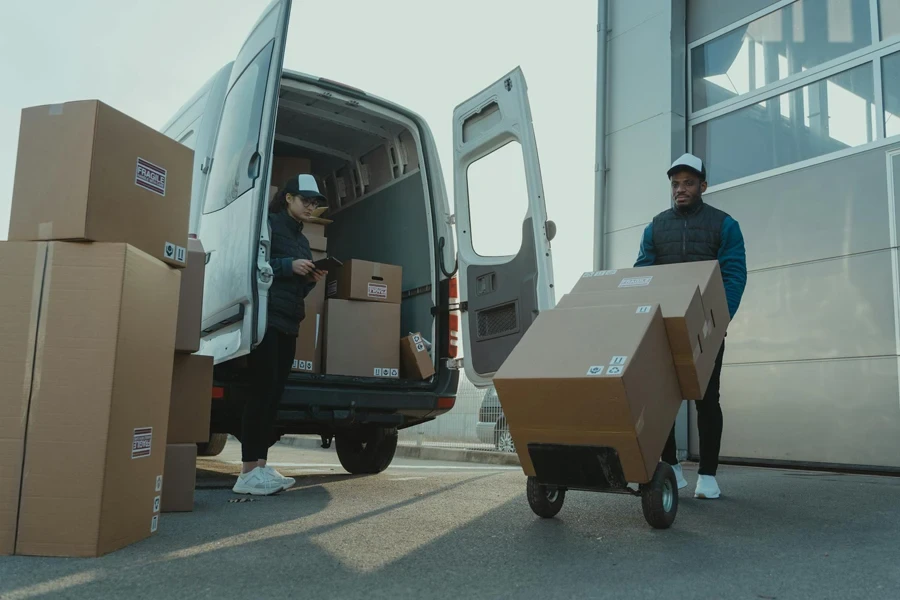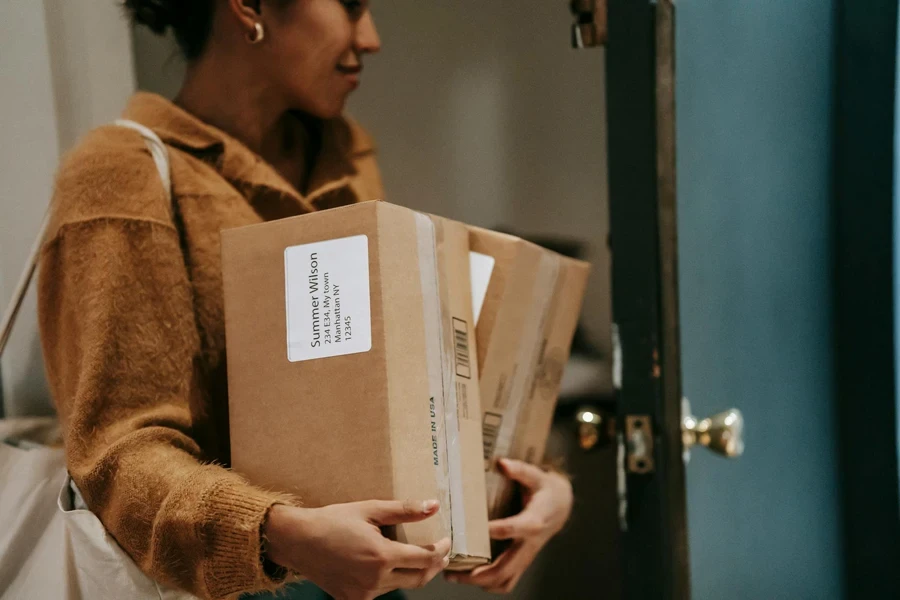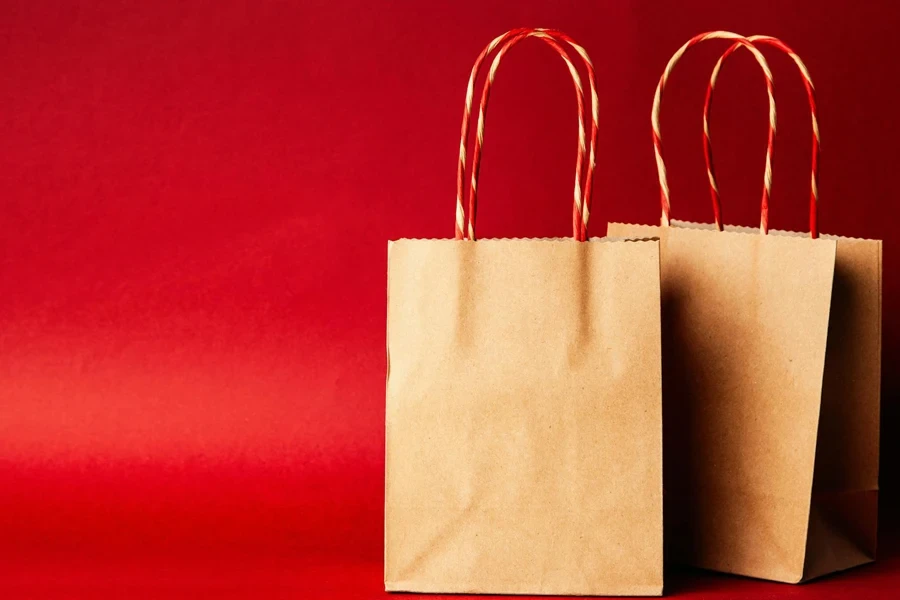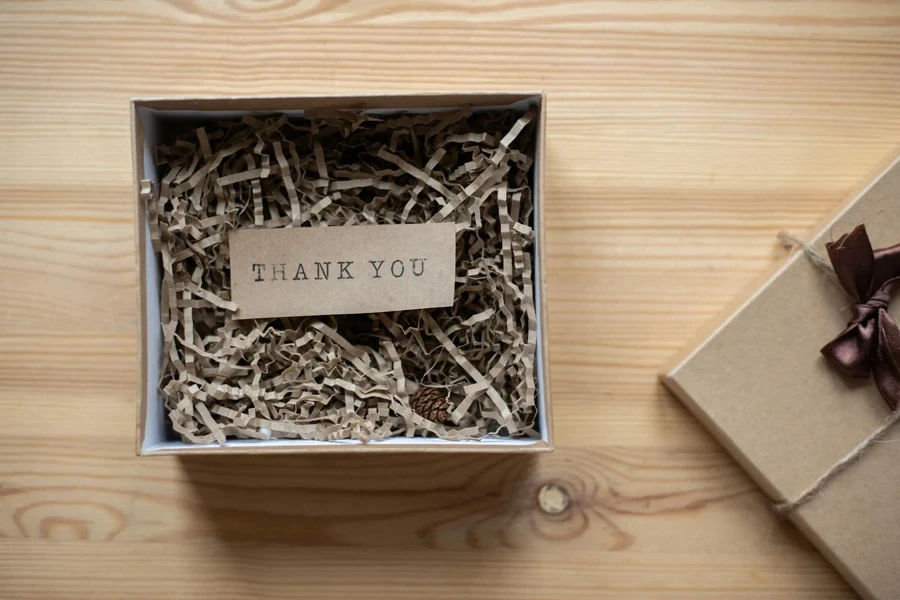As e-commerce continues its rapid growth, forecast to account for nearly a quarter of all retail sales by 2026, online retailers must prioritize sustainable packaging to meet consumer expectations and carbon emission reduction goals. However, brands also have an opportunity to create memorable unboxing experiences that surprise and delight stressed consumers. In this article, we’ll cover the key e-commerce packaging trends to watch, including rightsizing, paper-based solutions, reusable models, innovative materials, and designing for unboxing joy.
Table of Contents
1. Rightsized packaging
2. The rise of paper
3. Reusable packaging momentum
4. Next-gen packaging materials
5. Unboxing glimmers of joy
Rightsized packaging

With the average person in mature e-commerce markets receiving 64 parcels per year, and global shipments projected to hit 256 billion by 2027, the sheer volume of packaging waste is staggering. In some categories, up to 64% of the volume shipped is air due to oversized boxes. This not only wastes materials but also requires more space on delivery vehicles, increasing transport emissions.
Rightsizing technology is critical to combat this issue. Solutions range from AI-powered systems that create custom-sized boxes for each order, to expandable cartons that adjust to snugly fit contents without void fill. By tailoring packaging to product dimensions, brands can reduce box sizes by up to 40%, slashing cardboard waste by over a quarter and eliminating up to 60% of void fill.
The benefits extend beyond just material savings. Fitting more optimally sized packages on each truck significantly increases shipping efficiency and can cut transport emissions, which account for up to 70% of a package’s carbon footprint, by a sizeable margin. For cost savings, space efficiency, and environmental impact, making shipping packaging as compact as possible should be every online retailer’s first priority.
The rise of paper

As consumers and regulators alike demand an end to single-use plastics, paper-based packaging is emerging as the clear alternative. Globally, paper boasts a recycling rate of around 50%, far surpassing the mere 9% of plastic that gets recycled. Paper can also withstand more recycling loops, maintaining its integrity for up to 7 cycles compared to a maximum of 2 for plastic.
To capitalize on paper’s circularity advantages, brands should aim for mono-material packaging by using paper tapes, labels, and strappings. This makes the recycling process as simple as possible for end consumers. Even better, explore tree-free paper alternatives such as bamboo-based materials to push your eco-friendly credentials even further.
While some plastic packaging may still be necessary for certain products and supply chains, making the switch to paper wherever possible is a highly visible way for e-commerce brands to broadcast their sustainability commitments and make a measurable difference.
Reusable packaging momentum

The mounting piles of single-use packaging waste generated by e-commerce’s explosive growth have consumers worried, with 60% expressing concern over online shopping’s environmental impact. 52% even say they would choose one e-retailer over another if it offered reduced packaging. Rather than hoping this sentiment goes away, savvy brands are getting ahead of the curve with reusable packaging.
Reusable models, whether in-house or through third-party packaging-as-a-service providers, can drastically reduce packaging’s environmental toll. Estimates show potential to cut CO2 emissions by up to 82% and overall packaging waste by up to 87% compared to single-use mailers. While there are certainly logistical and behavioral challenges to overcome, the benefits are too significant to ignore.
Beyond sustainability wins, reusable packaging opens up new opportunities for customer engagement and brand storytelling. By involving consumers directly in packaging’s ongoing lifecycle and expressing a sincere commitment to waste reduction, online retailers can forge deeper relationships and loyalty. As environmental concerns continue rising, proactive brands will secure an advantage by making reusable models an integral part of their e-commerce packaging mix.
Next-gen packaging materials

Science is uncovering new solutions to some of packaging’s most stubborn sustainability sticking points. Innovative materials and coatings derived from natural sources are allowing brands to cut concerning chemicals and hard-to-recycle components without compromising on performance.
Instead of traditional plastic-coatings or even PFAS “forever chemicals” to shield packaging from liquids, grease, and abrasion, new paper coatings use green chemistry to impart hydrophobic and durability benefits while maintaining recyclability. Expect to see more packaging with these non-toxic, environmentally sound barrier protections in the coming years.
The drive to develop viable plastic-free protective packaging is also yielding exciting breakthroughs. Foams made from upcycled waste streams like seafood shells and plant cellulose offer comparable cushioning to conventional materials like expanded polystyrene. The difference is that these sustainable alternatives break down harmlessly if they escape into the environment after use.
As eco-aware consumers demand cleaner, greener packaging, brands that adopt and promote pioneering earth-friendly materials will have a compelling story to tell. The unboxing process becomes an opportunity to engage customers with powerful, authentic sustainability messaging that conventional packaging can’t match.
Unboxing glimmers of joy

After years of pandemic upheavals and non-stop grim news, consumers are hungry for products that provide a respite from the stress with delightful little “feel appeal” moments. While the days of excessive packaging are over, e-commerce boxes can still be designed to spark small bursts of much-needed joy.
This doesn’t have to mean expensive custom packaging or wasteful add-ins. Sometimes the most effective unboxing surprises are the simplest, like encountering an unexpected pop of cheerful color inside a box or package flap or following cleverly designed experiential reveals as the box opens. Tactile materials or even just a thoughtful, upbeat message can add an emotional dimension.
The key is to view the unboxing sequence through the lens of creating micro moments of delight. Especially for brands without extensive marketing budgets, the package interior becomes valuable real estate for immersing the consumer in a mood-enhancing brand story. Making unboxing memorable is also a savvy way to encourage social media shares and build buzz.
Of course, unboxing enhancements can’t come at the cost of sustainability. The challenge is to engineer glimmers of joy into the packaging experience in a way that aligns with overall waste-reduction and efficiency goals. Uplifting moments are most satisfying when they feel genuine rather than gratuitous.
Conclusion
As e-commerce growth surges toward 2026, online retailers have both an imperative and an opportunity to reimagine their packaging for a more sustainable, emotionally resonant future. By embracing rightsizing, paper-based alternatives, reusable models, material innovations, and joyful design, brands can demonstrate authentic environmental leadership while forging deeper connections with consumers.




